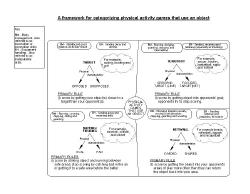Classification of Games
Based on the following three characteristics games can be divided into four categories:
-
Physical characteristics
-
Fundamental skills
-
Tactical problems (primary rules).
Physical characteristics refers to the shape and general size of the playing field as well as the the way the objects of the game are used. For example an oval shape in cricket and a fan shape in baseball, bowls left to block opponents bowls in Lawn Bowls.
Fundamental skills refers to body management (BM) skills such as i.e. Running, stopping, balance, guarding. These can also be called off-the-ball movements. Also, equipment handling (EH) skills such as sending or propelling, i.e. throw, strike, receiving, i.e. catching, trapping, and retaining, i.e. carrying, dribbling. These can also be called on-the-ball skills.
Tactical problems refers to the primary rules or defining aims that are common to all games in each category. Griffin et al. (1997) defines these aims as:
-
Target – propel an object, with a high degree of accuracy, at a target.
-
Batting/fielding or run scoring - strike a ball so it eludes defenders
-
Net/Wall – propelling an object into space so an opponent is unable to make a return.
-
Invasion or Territory – to invade an opponent’s territory to score.
Click
on the following icon for an overview of the four games category: 